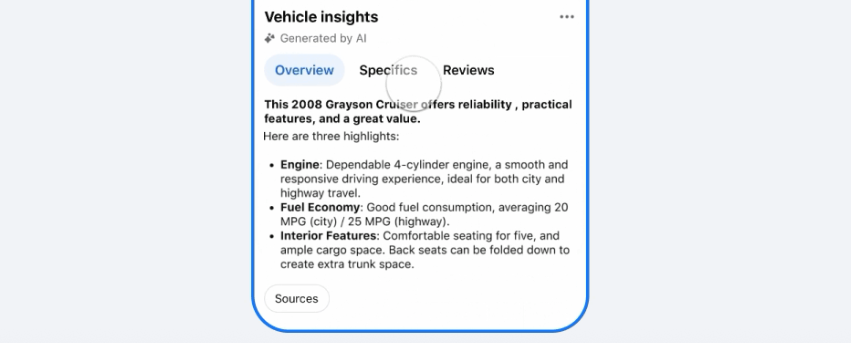Meta is revamping Facebook Marketplace in an effort to make it more appealing to "young adults" on the platform. The updates includes new collaborative shopping features, as well as AI-generated suggestions and "insights" about specific listings.
Now, would-be buyers can create Pinterest-like "collections" of Marketplace listings and invite friends to join. These collections can then be shared elsewhere on Facebook or on WhatsApp and Messenger. People will also be able to invite their Facebook friends to join messages with sellers, which Meta says will make it "easier to coordinate pickup, negotiate prices, and get answers to your questions." Facebook is also making Marketplace listings themselves more social, with the ability to add comments and reactions. And while I'm not sure many Facebook users are clamoring for this, it seems like it could seriously up the meme potential for accounts like @insanefbmarketplace.

And, because it's 2025 and AI is in just about every other part of Facebook, the company is also adding "AI insights" to listings. This will allow Meta AI to offer up suggestions for questions to ask sellers about the items they've listed. (Importantly, though, it looks like the default first-message suggestion is still a variation of "is this still available," which I've always found to be one of the more annoying quirks of using Marketplace.) The company is also experimenting with vehicle-specific "insights" from Meta AI as car shopping is apparently one of the most popular use cases for Marketplace among younger adults.
All of the updates are part of Meta's years-long mission to make Facebook cool — or, at least, useful — for "young adults." And the company has long touted Marketplace as one of the more popular features among that demographic. The company has also experimented with local events, a friends-only feed and bringing back the Facebook "poke."
